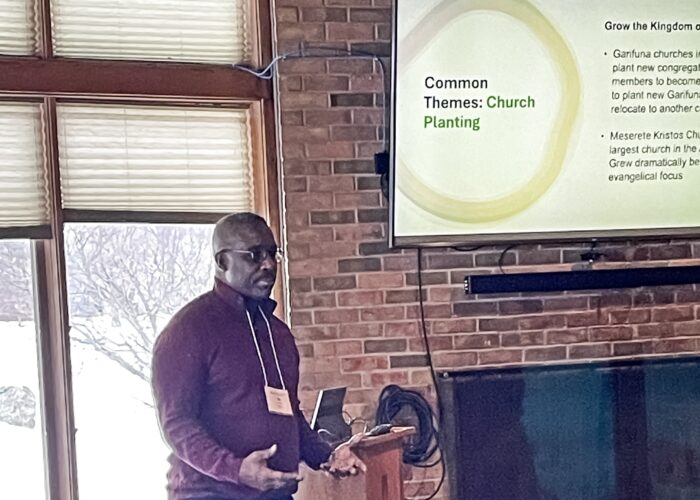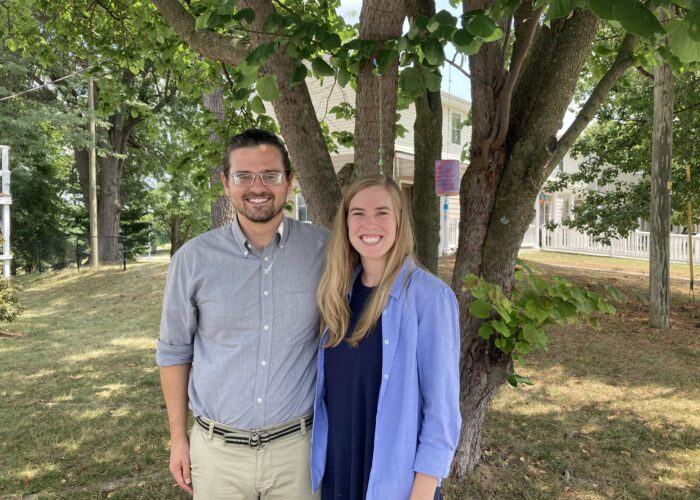The Season of Creation is a time when the global Christian family unites in prayer and action to protect the Earth, our home, starting September 1 with the Day of Prayer for Creation and ending with the Feast of St. Francis of Assisi, the patron saint of ecology, on October 4.
- Download the Mennonite Church USA Season of Creation worship guide to support worship services and activities during this time.
The Doctrine of Discovery originated with papal bulls that allowed various European powers to conquer the lands of non-Christians. In 1452, Pope Nicholas V issued the bull Dum Diversas, which authorized King Afonso V of Portugal to "subjugate the Saracens and pagans and any other unbelievers and enemies of Christ," and "reduce their persons to perpetual servitude." King Afonso V was given the right to take their belongings, including their land for his own use and the use of any future kings of Portugal.
This "permission" eventually became an international law enforceable worldwide, including Africa, Latin America and North America, which has caused large-scale human and environmental damage through the extraction of natural resources and the resulting pollution of land, water and air.
To learn more about efforts to protect the Earth from ongoing colonization, visit
The Coalition to Dismantle the Doctrine of Discovery.
A collaboration between
Mennonite Central Committee Great Lakes, Mennonite Mission Network and
Anabaptist Mennonite Biblical Seminary (AMBS) to highlight the commitment to recognize and honor historical injustices and promote ecological stewardship resulted in a gathering of about 120 people in September 2023 to witness the unveiling of signs identifying the
Bodéwadmi-Myaamia Trail (using Indigenous spellings). This trail connected the Maumee River watershed (Ft. Wayne) to the area around the southern tip of Lake Michigan (Chicago). The event honored the lives and cultures of those violently displaced by the U.S. government following the Indian Removal Act of 1830. It also acknowledged that some Indigenous descendants still live on their ancestral lands, now divided into Indiana and Michigan.

The main trail sign.
This ancient commercial route, possibly established 10,000 years ago, once traversed the land where (AMBS) now stands in Elkhart, Indiana. Used by the Miami, Potawatomi, and other Woodland Peoples, this route was a vital artery according to Dr. Luke Gascho, executive director emeritus of
Merry Lea Environmental Learning Center at
Goshen College.
Indigenous removal and Anabaptist settlement
Descendants of Amish and Mennonite settlers who occupied the land after Indigenous removal attended the ceremony. The event lamented the harm done by White settlers and recognized the genocide and desecration of Indigenous cultures. Readings and prayers expressed a desire to engage with Indigenous Peoples to repair nearly two centuries of injustice.
Honoring the past and present
Among the attendees was
Kaitlin Curtice, of Potawatomi lineage. Her ancestors survived the Trail of Death, a 660-mile forced march during which 859 Potawatomi people were relocated in 1838, resulting in the deaths of 41 people, mostly children and elders. Curtice, born in Oklahoma where many Potawatomi eventually settled, expressed the significance of returning to her ancestral lands.
Signs reflecting creation care and Christian discipleship
The sign unveiling was part of AMBS’s biennial Rooted and Grounded Conference on Land and Christian Discipleship, "Pathways through Climate Doom: Resistance and Resilience," held from September 28-30, 2023 where Curtice was a keynote speaker.

Dr. Gascho unveiling the sign. Photo courtesy of Elkhart Truth.
Dr. Gascho led the ceremony, closing with a blessing that emphasized gratitude for the interconnectedness of all creation and the importance of walking gently on the earth, inspired by Indigenous footsteps over millennia. He called for the signs to remind people of the history and presence of the Miami and Potawatomi Peoples and to inspire a pursuit of reparative justice.
Signage project background
The
Potawatomi and Miami Trail Marker Group, led by Dr. Gascho, worked to make this trail’s history accessible. Cynthia Friesen Coyle, a graphic designer at Mennonite Mission Network, designed the signs with input from historic preservation officers and members of the
Citizen Potawatomi Nation, the
Miami Tribe of Oklahoma, and the
Pokagon Band of Potawatomi. The design includes symbols significant to Indigenous cultures, such as the sandhill cranes, Potawatomi medicine wheel, and turtle representing Turtle Island.
Dr. Gascho led a workshop detailing how he learned the trails history through surveyors’ maps, settlers’ journals, and conversations with Indigenous historians. He emphasized that marking the trail serves as a conversation starter, fostering cross-cultural understanding.
Wildflowers along the Bodéwadmi-Myaamia Trail
While it is not possible to walk the entire 145 miles of the Bodéwadmi-Myaamia Trail, a path through native prairie grasses and wildflowers on the AMBS campus allows for a partial walk. The trail intersects modern infrastructure, including U.S. 33 and Sixth Street in Elkhart, and runs through sites like the Goshen Court House and Greencroft retirement community campus.
The trail-marker group plans to erect additional signs as resources become available.
- Those interested in supporting this project can contact
info@potawatomi-miamitrail.org. - To learn about Indigenous trails in your community, see the
Resources for Knowing Your Place toolkit.





